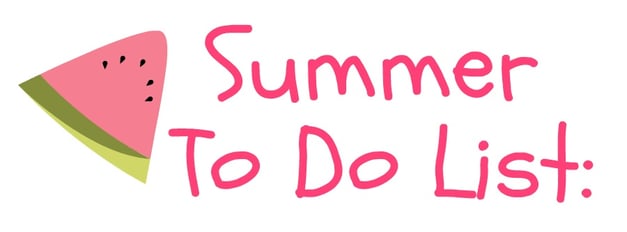
It is well-documented that summer learning loss is real for students, with kids losing up to two months of mathematical computational skills during their break, and low-income students falling behind in reading as well.
While I’m partly suspicious that a steady diet of outrageously titled Buzzfeed articles and movies like Godzilla can explain at least half of these results, the truth is many students simply lack access to quality learning opportunities during the summer.
The same can be said for adults. Sure, teachers may have access to professional development as they wrap-up the school year in June or pick up again in August. But the time in between is a golden opportunity to move beyond large-group sessions that take place in the midst of finalizing gradebooks or back-to-school logistics. There’s never been a better time to reflect, take stock of your own classroom and approach to teaching, and get excited about trying something new for the upcoming school year.
So where do you start? There are books to read, conferences to attend, blogs and Twitter streams to follow, Massive Open Online Courses (MOOC’s) to enroll in, museums to visit, and too many other resources to list. Rather than succomb to a tyranny of choice and end up at another lackluster Spiderman offering, make it as easy as possible on your brain: make a list, and follow through. Lists help us streamline choices and commit to action, and everyone from Arya Stark to Richard Branson to Susan Sontag is into them.
With that in mind, here’s a few lists to jumpstart your professional learning this summer and plan for the upcoming school year.
1. Trip list
- Write down 5 places will go this summer that will bring real-world experiences back to your classroom next year. These can be as simple as the grocery store, as standard as a museum, or as absurd as that cliff you’re launching from in a flying squirrel suit.
- Jot down 2-3 ideas for how you’ll use the experience and cross off each one as you go this summer, then pull the list out during your August PD if you don’t have the time or willpower to plan in July.
2. Tip list
- Write down 10 tips you would give to your students on how to get the most out of your class next year.
- Ask yourself: how excited will my students be to see this list? How excited would I be to take a class with these points of emphasis?
3. Twitter List
- Twitter is an incredible professional learning resource, and educators know it. Links, resources, and articles get tweeted out all the time, and teachers connect with one another in communities of practice focused on content areas and teaching strategies.
- Edudemic lists 100 ways teachers can use Twitter, which can be a good place to start. If 100 is too much, try a list of 50 from TeachHub
- Make a list of 5 ways Twitter can be useful for your own professional development this summer.
4. Reading List
- Write down 2-3 books you know you want to read this summer.
- Write down 5 more books you’d like to read but know you can’t get to immediately.
- In doing so, consider your own preference for nonfiction that is more theoretical than practical, or vice versa. If summer is the only time you have to read fiction, pick at least one book you think might inspire you, your students, or your colleagues to have more fun next year.
- When all else fails just pick something from myriad of summer reading lists out there. Check out something from ASCD or Education Closet to get you started.
5. Wish List
- There are a couple of options here. One is retrospective: Write down 10 things you wish you would have done in your classroom or professional life last year, then circle 2-3 that you can implement at the beginning of next year.
- The other is forward-looking and more generative: Write down 10 resources that would make your classroom outrageously engaging. Then brainstorm how to come up with 1-2 of these resources for next year. Are they resources that cost money? Consider DonorsChoose. Are they ones that will take more time? Figure out how to get more time or get more help.
6. Watch list
- If you’re more the Netflix type than theater-goer, pick 5 documentaries to watch that you could use professionally next year. Similar to the reading list suggestion, if this is your time to catch up on TV series or top flicks of 2014, consider the connections that can be made from pop culture to the classroom, the lunchroom, or the staff meeting room. Pick 5 and go for it.
- Watch each one. Jot down some notes after the movie about how the selection can influence your work with colleagues, students, or parents next year.
7. MOOC list
- Massive Open Online Courses (MOOC’s) cover everything from Shakespeare to advanced statistics. Find something directly related to teaching and learning through a list like this one from TeachThought.
- Completion rates on MOOC’s are exeedingly low, so make a list of one and follow through, or select 2-3 you know you won’t finish but would like to explore.
- Write down 5-10 takeaways from each course that directly influence your professional learning and plans for next year. The takeaways can be things you learned from the course, or things you learned about the experience of taking a course independently and online. In an age where we are asking students to harness technology to help personalize their learning, we have much to learn from undertaking the experience ourselves.
Best of luck with summer listing and learning!




